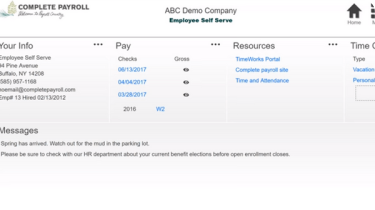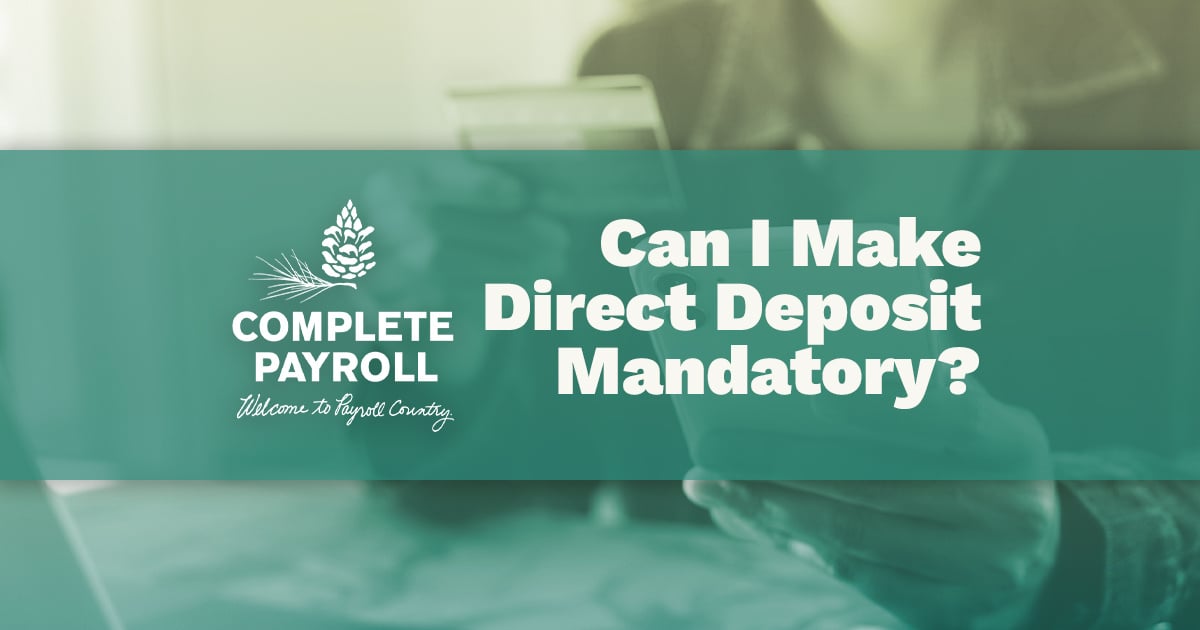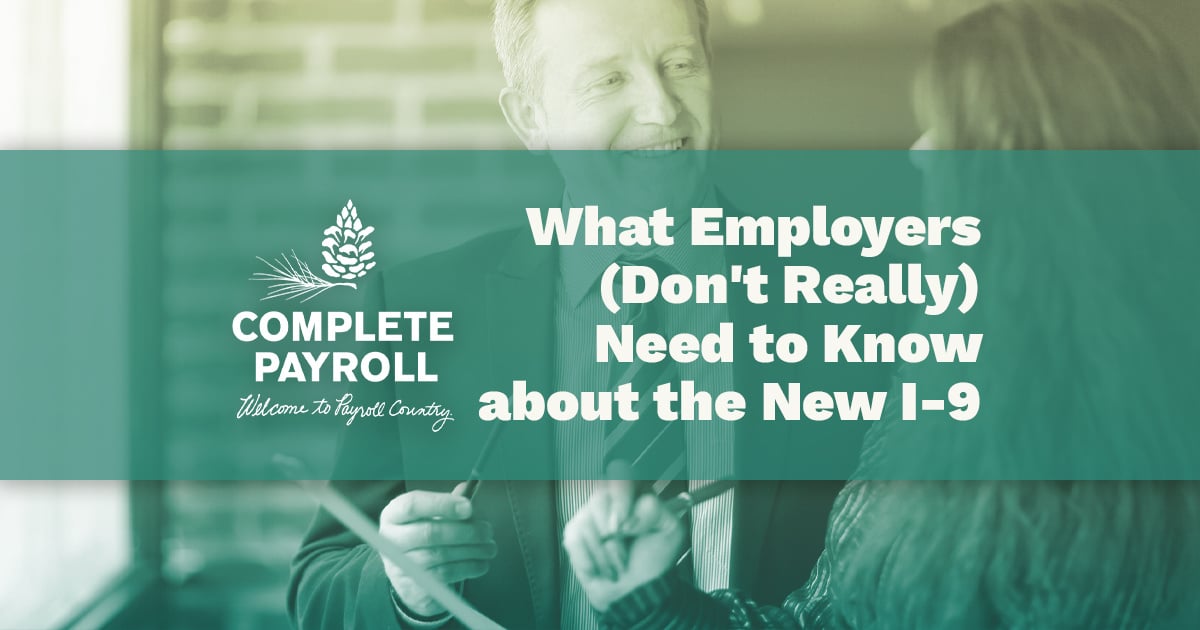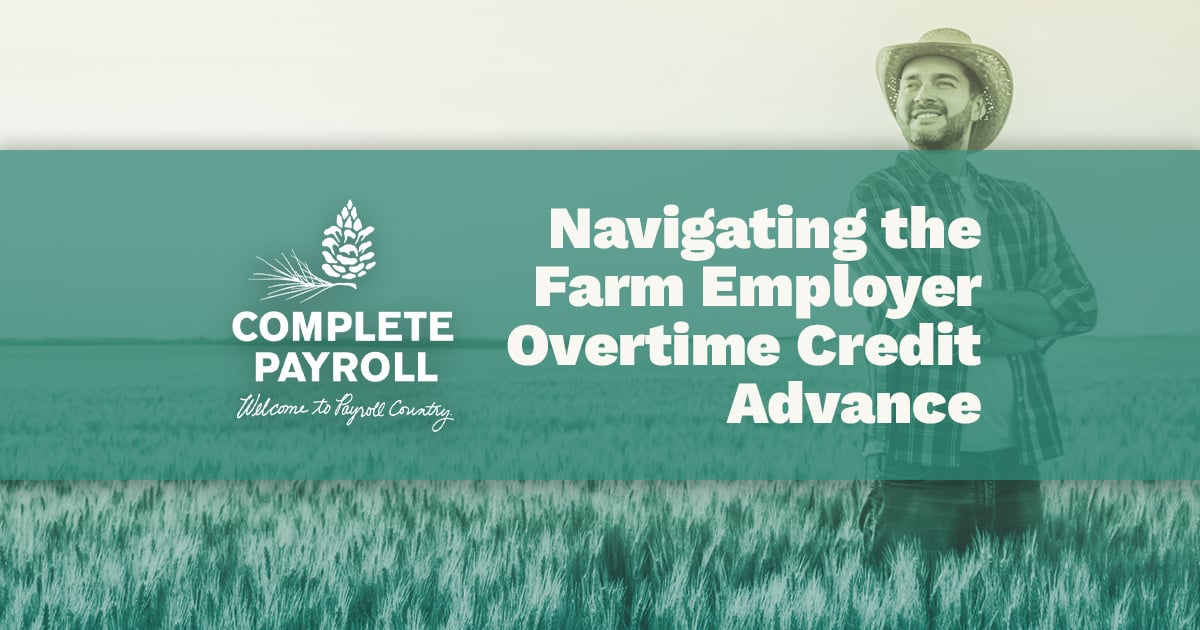Payroll Taxes: A Guide
A structured and simple overview of what employers need to know about the taxes that flow through payroll - on both the employer and employee side. If you run a small business or work in payroll, these are topics you must understand.
Contents
- Introduction
- What is are Payroll Taxes?
- Who Pays Payroll Taxes?
- Calculating the Employee's Payroll Tax Withholdings
- Calculating the Employer's Payroll Tax Responsibility (FICA)
- Tools Available to Employers for Understanding Payroll Tax
- What Other Taxes are Employers Responsible for?
- Get Professional Support for Payroll Tax Management
Introduction to Payroll Taxes
When entrepreneurs and small business owners imagine their companies growing, becoming more profitable, and needing the support of more employees, they often think about all of the exciting things that are going to happen with that growth. Building a company culture, increasing profits, and gaining more and more customers--are some of the most exciting parts of being an entrepreneur.
Payroll taxes are not one of the exciting parts.
In fact, for many small business owners, understanding payroll taxes and then implementing an effective payroll tax management system can be one of the most complicated parts of hiring their first employees.
At Complete Payroll, we are experts in setting up and maintaining payroll tax systems. We want to help you figure out everything you need to know. So let’s break down the most important pieces of information you need to know about ensuring that you are compliant with all federal and state payroll tax laws.
How are payroll taxes calculated in NYS?
In the video below, our Tax Manager, Ashley Hamilton, explains how payroll taxes are calculated.
What are Payroll Taxes?
Payroll taxes look different from nation to nation, but a simple definition is that these taxes are imposed on either employees or employers (or both!). Typically, the amount paid by the employer or the employee is based on a percentage of the employee’s salary.
There are a number of different kinds of payroll taxes, including:
Withholding Taxes
According to Investopedia, “a withholding tax is an amount that an employer withholds from employees' wages and pays directly to the government. The amount withheld is a credit against the income taxes the employee must pay during the year.”
Pay-As-You-Earn (PAYE) Taxes
This is a subcategory of withholding taxes that is used primarily in the United Kingdom and in Australia, although the unique aspect of PAYE taxes is that they are treated as a sort of advance on the income tax bill that would be due at the end of the year. Typically, employers are the ones who calculate this amount, but with the government’s approval.
Employer-Paid Taxes (FICA)
Some taxes don’t come from the employee’s salary, but from the employer, based on the salary they provide. These amounts tend to cover programs like social security, Medicare, and other insurance programs. In the United States, FICA stands for Federal Insurance Contribution Act and funds Medicare and Social Security.
Additionally, your employee handbook is an ideal way to communicate with employees, whether it be about what is expected from them, what they can expect from their management and the company itself, or provide updates to company policies.
Helpful Tax Articles
Who Pays Payroll Taxes?
Although some taxes are paid by the employer and some by the employee, the burden ultimately falls to the employee. This is because employers often accommodate for certain taxes they are responsible for by lowering the wage or salary.
Not every state collects payroll taxes. Alaska, Florida, Nevada, South Dakota, Texas, Washington, and Wyoming do not collect payroll taxes from their employees’ income, while New Hampshire and Tennessee only collect income tax from investment-based income.
Watch a Quick Explanation
In the video below, our Tax Manager, Ashley Hamilton, explains everything employers need to know about the new ECE Tax in New York State.
Calculating the Employee's Payroll Tax Withholdings
The employee is the one who gets to determine whether or not taxes will be withheld from their paycheck and how much. If they choose to, employees can receive their entire paycheck and then owe taxes at the end of the year. However, most employees choose to have funds withheld to avoid a large tax bill every year.
You are responsible for withholding the amount that your employees choose via their W-4. They will provide you with their marital status, the number of allowances they can take, and then any additional funds they want to have withheld. You use those numbers to determine the exact amount withheld from their salary.
Calculating the Employer's Payroll Tax Responsibility (FICA)
As the employer, your portion is determined by calculating a percentage of the employee’s salary. Social Security and Medicare contributions must be kept separate. Your contribution to Social Security is 6.2% of the employee’s gross pay, whereas your Medicare contribution is 1.45% of said gross pay.
Watch a Quick Explanation
In the video below, our Tax Manager, Ashley Hamilton, explains the difference between federal withholding and FICA withholding.
There is a maximum social security withholding set each year, and you will need to ensure that the total being withheld does not exceed that maximum.
There is also an Additional Medicare tax for some employees. This 0.9% tax is applied to employees who surpass the following income thresholds:
- Married filing jointly - $250,000
- Married filing separately - $125,000
- Single - $200,000
- Head of household (with qualifying person) - $200,000
- Qualifying widow(er) with dependent child - $200,000
Helpful Articles
Tools Available to Employers for Understanding Payroll Tax
There are a lot of ins and outs to payroll tax. Entrepreneurs and small business owners often need support in making sure they are fully compliant with payroll tax policies. Because certain thresholds and percentages change from year to year, understanding payroll taxes requires continued knowledge building and information gathering.
A number of tools exist to help employers.
-
The IRS provides an Employer Tax Guide every year in the form of a downloadable PDF.
-
Several payroll tax calculators can be found online. Our advice is to simply be sure that you are using one with fully up-to-date information so that you don’t up with any miscalculations.
-
Call in the professionals! Many employers end up realizing that payroll tax management is not the best use of their time. Small businesses, in particular, already need the people in charge to be invested in making the company work, not getting bogged down in the details. Let’s talk about when this might be a good strategy in the next section!
Helpful Articles
What Other Taxes are Employers Responsible For?
In addition to FICA and income tax withholdings, all employers are also responsible for paying unemployment taxes. There are federal unemployment taxes (FUTA) and state unemployment taxes (SUTA), and these are calculated using a specific formula provided by federal and state government agencies.
Helpful Articles
Get Professional Support for Payroll Tax Management
Generally, employers don’t outsource payroll tax management while still managing the rest of the tasks associated with paying employees. Rather, they outsource their entire payroll system, and taxes are one of the things within the purview of the hired agency or company.
Outsourcing your payroll can be a great way for you to be able to focus on the work of running your company, rather than the logistics of managing payroll and employment taxes. As a professional payroll company, we at Complete Payroll think of it like this: by letting us manage this part of your business, you get to commit more time and energy to the things that will make your company great!
Helpful Articles
There are generally three main reasons why people choose to hire a payroll company like ours.
-
They don’t have time to manage their own payroll and need to outsource these tasks so that they can focus on their job.
-
They don’t have a dedicated HR department because they are a new, small company, and therefore they don’t have a person or team who can be responsible for the tasks associated with human resources.
-
They don’t have a strong grasp of payroll taxes and want to make sure they are fully compliant. Entrepreneurs and small business owners are often experts in their industry, but not necessarily in tax and employment law.
As for why they hire us, specifically, it is because, at Complete Payroll, we help thousands of companies around the country. We are professional, innovative, and committed to providing our clients with personal and exceptional support every step of the way.
We are happy to work with small businesses and entrepreneurs no matter what reason they end up realizing they need additional payroll help! Contact us today to learn more about how we can simplify your business’s day-to-day operations as it relates to payroll, human resources, time tracking, and other compliance concerns.
Debbie Blacklock
Fantastic service! Friendly helpful staff. Your company was and is the most sourced not only with payroll needs but also with the update and verbal connection with your clients when it came to the COVID-19 PPP. Believe me when I tell you, I had less help from my bank or my Accountant! Thank you!
Bahar Uttam
I have been working with Lacy Smart and her team for the last few years. I have been impressed by her responsiveness, accuracy, and high level of providing client satisfaction. She and her team are a wonderful testament to the organization!
Bonnie Deneef
I have worked with a few different payroll providers during my career. Complete Payroll is absolutely, by far, the most proficient and customer service-oriented provider I have been privileged to work with. Lindsay Ezard goes above and beyond to assist me with any question I may have. Thank You Lindsay!
Cathy Pace
Finger Lakes Wrestling Club Inc
We were referred to Complete Payroll years ago by a board member and haven't looked back since. When I first started working with them, I knew nothing about payroll. My first rep Lacey, and now JoAnn, are great to work with. Working with Complete Payroll has just been a wonderful all-around experience for me.
Christina Wagar
Dr. Christopher Mozrall
Complete Payroll is a great payroll company, and we love Lacey! She always has the answers to my questions without hesitation. There is very little (if any) wait time to get a call back.
Colleen Koll
The first suggestion I made after I joined Shear Ego was that if they were not yet using Complete Payroll, they should be. We continue to be impressed and happy with the quality and friendliness of service, and the excellent newsletters and up-to-date information on all things payroll and HR.
Debbie Klymkow
We moved to Complete Payroll about 3 years ago. It was seamless and working with Lacy Smart on Mondays is a breeze.
Dick Eakins
Norco Farms
Complete Payroll fits my budget, I never get bounced around between customer service reps, and it's very easy to enter my payroll. I simply take a photo of my payroll sheet and email it to my rep. There's never a problem! With them, it's business done, and business done right.
Don Cunningham
Complete Payroll Processing provided an easy transition from internal payroll processing. With payroll as their core competency, CP has the expertise to help mitigate errors and ease the burden of annual updates. Comprehensive reporting gives all the details needed and an organization can operate with an added piece of mind knowing that the payroll service is taken care of.
Eileen Reeves
After nearly 10 years, we are receiving the same or better service than when we started. The ability to reach our dedicated customer service representative in a timely manner is huge when there are deadlines in play. Requests for unique reports and integration with our other vendors has been handled without hesitation. We truly feel a partnership with Complete Payroll.
Emily Wyse
I just love Lindsay! She does an awesome job! She is very responsive and I like that she teaches me how to find things rather than just doing it for me.
Howard Clarke
H Clarke Services
We have been with Complete Payroll for quite awhile now and plan on staying. Thanks!
Watch Howard's Testimonial
John Worth
We have been well served by Complete Payroll. When we have needed support, it was given both in payroll and other employee matters, like handbooks.
Kelly Stephenson
We have been using Complete Payroll for over five years and have found them to be responsive, professional, friendly, and cost effective. Customer service is best judged when something goes wrong. Complete Payroll is always there immediately to help fix the issue. Complete Payroll is a payroll partner, not just a payroll service.
Paul Cronk
I've been very pleased with the service and responsiveness of my CSR, and CP's continued dedication to provide us with all the tools we need to have a successful payroll and HR experience. You are always available when I have a question and always make sure that any problems that arise are worked through to my satisfaction.
Teresa Jackson
We have been customers for many years. Evolution Software is easy to use but, more importantly, Cindy is an email away and her knowledgeable, efficient, and quick to replies to our questions are appreciated. We're very happy with Complete Payroll.
Tina Canali
Complete Payroll is always there if we have a problem or need something special! Their response time is AWESOME!
Denni Harbaugh
My CSR, Andi Dimmick, is The Bomb! She's always friendly, cheery, and with all her clients, makes me feel like she has carved time out for ME. Her customer service is AWESOME, and the personal touch means so much!
Elvira Aletta
Everyone I talk to at CP is friendly and tries to help. If they don't have a ready answer, that's OK. They take the time to find one. Website is user friendly, too. The actual operation of payroll is dependable and reliable.
Peter Varlan
Things go quite smoothly and I have a very good rep: Megan!
Cindy Van Buren
Great customer support and service!
Lisa Lyons
Attica Auto Supply Inc
Friendly, answered all my questions, and never felt hurried.
Bonnie DeNeef
LeeAnn was just wonderful to work with.
Jackie Agusta
Lee Anne is a wonderful trainer. Concise and clear. A pleasure!!
Jennifer Pauly
The program has met our needs! Actually exceeded them!
Sue Budd
Great products, great people and no problems!
Gail Stowe
Stowe Potato Sales
Love working with Complete Payroll, especially with Joann Gaedeke. She is amazing! Very thorough and accurate; takes the pressure from me! Love it!
Nancy Miller
N&G Broadway Inc
Very friendly staff, and you are always on top of the services you offer.
Chris Smith
I appreciate updates that Complete Payroll provides. Site is easy to navigate. Our rep, Karla, is so accommodating and friendly. We appreciate her also. So happy we made the switch to Complete Payroll!
Frances Sweeney
The service that we have received has been EXCELLENT and I can't say enough about Lindsay Ezard's patience and support. Everyone that I have had contact with is professional, knowledgeable, and personable. I have received many calls from your competitors wanting to talk to us but I tell them I am very happy with our service!
Lora Miller
Great company to work with. Wonderful people; knowledgeable, helpful, and friendly!
Helen Cunningham
Customer Service and payroll representatives are excellent!
Sally Kovatch
The program works very well for our company. We like the virtual payroll option and our Account Representative, Ashley, is always very responsive and helpful!
Teri Peters
For 11+ years, Andrea Dimmick has been our CSR. She is extremely competent, helpful, responsive. Evolution portal, once trained, is easy to use and again, if we ever run into an issue, Andrea walks us right through. I would highly recommend... and have!
Nicole Begin
Love working with CPP. They have made life so much simpler for me.
Mary Sutter
I have worked with two other payroll companies and Complete Payroll has been the best in payroll custom packages and customer support! The payroll reports are readable with larger font when printed and program is user friendly.
Laura Lane
The customer service is beyond compare!
Barbie Gozelski
LeRoy Country Club
When I need something, you always help. You're easy to get ahold of; you DON’T put me on hold! I get to email or talk to a real person (Lindsay) and she's always consistent.
Nancy Miller
N&G Broadway Inc
Very friendly staff, and you are always on top of the services you offer!
Patricia Gilbertson
CPP has resources that consistently monitor payroll regulations at all levels that ensures compliance. This is a great boon for a small business with limited personnel.
Elizabeth Barefoot
I have recommended Complete Payroll to my clients for years. You have the best customer service of any payroll company I deal with. I know that mistakes will happen on occasion, but Complete Payroll really works to resolve issues promptly.
Kris Dussmann
We are a Complete Payroll customer and have been very happy with our relationship. We have had no problem referring CPP to our business owner clients.
Margaret Urlacher
Pittsford Realty Corp
Customer Service is awesome! Love Andrea 😀
Liz Maher
Our payroll specialist, Ashlee Adams, is extremely knowledgeable, helpful and quick to respond to all questions and concerns. She has alleviated many stressful situations for our company and is a true pleasure to work with! Thank you Ashlee!
Marybeth Simoneit
Friendly employees, lots of resources.
Kathy Cassetta
You have the best employees working for you. They are professional and a delight to work with!
Joe Czerny
Service reps are so helpful and always available. Andrea is the best!
Mark Logan
I love our CSR Megan. She makes my life so easy. I used to be with one of your competitors and the CSR there treated me like a number. Megan treats me like she is part of my team.
Patty Dugan
Any time I need anything we always have a prompt response from you.
Kris Dussmann
We are a Complete Payroll customer and have been very happy with our relationship. We have had no problem referring CPP to our business owner clients.
Debbie Blacklock
Fantastic service! Friendly helpful staff. Your company was and is the most sourced not only with payroll needs but also with the update and verbal connection with your clients when it came to the COVID-19 PPP. Believe me when I tell you, I had less help from my bank or my Accountant! Thank you!
Bahar Uttam
I have been working with Lacy Smart and her team for the last few years. I have been impressed by her responsiveness, accuracy, and high level of providing client satisfaction. She and her team are a wonderful testament to the organization!
Bonnie Deneef
I have worked with a few different payroll providers during my career. Complete Payroll is absolutely, by far, the most proficient and customer service-oriented provider I have been privileged to work with. Lindsay Ezard goes above and beyond to assist me with any question I may have. Thank You Lindsay!
Cathy Pace
Finger Lakes Wrestling Club Inc
We were referred to Complete Payroll years ago by a board member and haven't looked back since. When I first started working with them, I knew nothing about payroll. My first rep Lacey, and now JoAnn, are great to work with. Working with Complete Payroll has just been a wonderful all-around experience for me.
Christina Wagar
Dr. Christopher Mozrall
Complete Payroll is a great payroll company, and we love Lacey! She always has the answers to my questions without hesitation. There is very little (if any) wait time to get a call back.
Colleen Koll
The first suggestion I made after I joined Shear Ego was that if they were not yet using Complete Payroll, they should be. We continue to be impressed and happy with the quality and friendliness of service, and the excellent newsletters and up-to-date information on all things payroll and HR.
Debbie Klymkow
We moved to Complete Payroll about 3 years ago. It was seamless and working with Lacy Smart on Mondays is a breeze.
Dick Eakins
Norco Farms
Complete Payroll fits my budget, I never get bounced around between customer service reps, and it's very easy to enter my payroll. I simply take a photo of my payroll sheet and email it to my rep. There's never a problem! With them, it's business done, and business done right.
Don Cunningham
Complete Payroll Processing provided an easy transition from internal payroll processing. With payroll as their core competency, CP has the expertise to help mitigate errors and ease the burden of annual updates. Comprehensive reporting gives all the details needed and an organization can operate with an added piece of mind knowing that the payroll service is taken care of.
Eileen Reeves
After nearly 10 years, we are receiving the same or better service than when we started. The ability to reach our dedicated customer service representative in a timely manner is huge when there are deadlines in play. Requests for unique reports and integration with our other vendors has been handled without hesitation. We truly feel a partnership with Complete Payroll.
Emily Wyse
I just love Lindsay! She does an awesome job! She is very responsive and I like that she teaches me how to find things rather than just doing it for me.
Howard Clarke
H Clarke Services
We have been with Complete Payroll for quite awhile now and plan on staying. Thanks!
Watch Howard's Testimonial
John Worth
We have been well served by Complete Payroll. When we have needed support, it was given both in payroll and other employee matters, like handbooks.
Kelly Stephenson
We have been using Complete Payroll for over five years and have found them to be responsive, professional, friendly, and cost effective. Customer service is best judged when something goes wrong. Complete Payroll is always there immediately to help fix the issue. Complete Payroll is a payroll partner, not just a payroll service.
Paul Cronk
I've been very pleased with the service and responsiveness of my CSR, and CP's continued dedication to provide us with all the tools we need to have a successful payroll and HR experience. You are always available when I have a question and always make sure that any problems that arise are worked through to my satisfaction.
Teresa Jackson
We have been customers for many years. Evolution Software is easy to use but, more importantly, Cindy is an email away and her knowledgeable, efficient, and quick to replies to our questions are appreciated. We're very happy with Complete Payroll.
Tina Canali
Complete Payroll is always there if we have a problem or need something special! Their response time is AWESOME!
Denni Harbaugh
My CSR, Andi Dimmick, is The Bomb! She's always friendly, cheery, and with all her clients, makes me feel like she has carved time out for ME. Her customer service is AWESOME, and the personal touch means so much!
Elvira Aletta
Everyone I talk to at CP is friendly and tries to help. If they don't have a ready answer, that's OK. They take the time to find one. Website is user friendly, too. The actual operation of payroll is dependable and reliable.
Peter Varlan
Things go quite smoothly and I have a very good rep: Megan!
Cindy Van Buren
Great customer support and service!
Lisa Lyons
Attica Auto Supply Inc
Friendly, answered all my questions, and never felt hurried.
Bonnie DeNeef
LeeAnn was just wonderful to work with.
Jackie Agusta
Lee Anne is a wonderful trainer. Concise and clear. A pleasure!!
Jennifer Pauly
The program has met our needs! Actually exceeded them!
Sue Budd
Great products, great people and no problems!
Gail Stowe
Stowe Potato Sales
Love working with Complete Payroll, especially with Joann Gaedeke. She is amazing! Very thorough and accurate; takes the pressure from me! Love it!
Nancy Miller
N&G Broadway Inc
Very friendly staff, and you are always on top of the services you offer.
Chris Smith
I appreciate updates that Complete Payroll provides. Site is easy to navigate. Our rep, Karla, is so accommodating and friendly. We appreciate her also. So happy we made the switch to Complete Payroll!
Frances Sweeney
The service that we have received has been EXCELLENT and I can't say enough about Lindsay Ezard's patience and support. Everyone that I have had contact with is professional, knowledgeable, and personable. I have received many calls from your competitors wanting to talk to us but I tell them I am very happy with our service!
Lora Miller
Great company to work with. Wonderful people; knowledgeable, helpful, and friendly!
Helen Cunningham
Customer Service and payroll representatives are excellent!
Sally Kovatch
The program works very well for our company. We like the virtual payroll option and our Account Representative, Ashley, is always very responsive and helpful!
Teri Peters
For 11+ years, Andrea Dimmick has been our CSR. She is extremely competent, helpful, responsive. Evolution portal, once trained, is easy to use and again, if we ever run into an issue, Andrea walks us right through. I would highly recommend... and have!
Nicole Begin
Love working with CPP. They have made life so much simpler for me.
Mary Sutter
I have worked with two other payroll companies and Complete Payroll has been the best in payroll custom packages and customer support! The payroll reports are readable with larger font when printed and program is user friendly.
Laura Lane
The customer service is beyond compare!
Barbie Gozelski
LeRoy Country Club
When I need something, you always help. You're easy to get ahold of; you DON’T put me on hold! I get to email or talk to a real person (Lindsay) and she's always consistent.
Nancy Miller
N&G Broadway Inc
Very friendly staff, and you are always on top of the services you offer!
Patricia Gilbertson
CPP has resources that consistently monitor payroll regulations at all levels that ensures compliance. This is a great boon for a small business with limited personnel.
Elizabeth Barefoot
I have recommended Complete Payroll to my clients for years. You have the best customer service of any payroll company I deal with. I know that mistakes will happen on occasion, but Complete Payroll really works to resolve issues promptly.
Kris Dussmann
We are a Complete Payroll customer and have been very happy with our relationship. We have had no problem referring CPP to our business owner clients.
Margaret Urlacher
Pittsford Realty Corp
Customer Service is awesome! Love Andrea 😀
Liz Maher
Our payroll specialist, Ashlee Adams, is extremely knowledgeable, helpful and quick to respond to all questions and concerns. She has alleviated many stressful situations for our company and is a true pleasure to work with! Thank you Ashlee!
Marybeth Simoneit
Friendly employees, lots of resources.
Kathy Cassetta
You have the best employees working for you. They are professional and a delight to work with!
Joe Czerny
Service reps are so helpful and always available. Andrea is the best!
Mark Logan
I love our CSR Megan. She makes my life so easy. I used to be with one of your competitors and the CSR there treated me like a number. Megan treats me like she is part of my team.
Patty Dugan
Any time I need anything we always have a prompt response from you.
Kris Dussmann
We are a Complete Payroll customer and have been very happy with our relationship. We have had no problem referring CPP to our business owner clients.
Debbie Blacklock
Fantastic service! Friendly helpful staff. Your company was and is the most sourced not only with payroll needs but also with the update and verbal connection with your clients when it came to the COVID-19 PPP. Believe me when I tell you, I had less help from my bank or my Accountant! Thank you!
Recent Articles from the Blog
We're constantly publishing content about payroll, human resources or anything related to managing your people.
Subscribe to Our Newsletter
Twice a month we share relevant and timely blog articles and other resources. No solicitations. No funny business. Just quality stuff to help employers.







